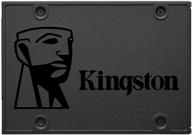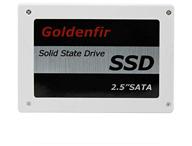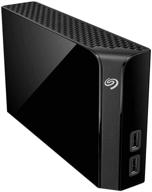
Review on 🔥 Enmotus FuzeDrive PRO Gaming M.2 Hybrid SSD 1.6TB SLC Gen 3 PCIe NVMe with AI, x4 TBW Endurance, Up to 3470 MB/s Read – 3000MB/s Write (P200-1600/128) by Ryan Cornelius

The software that doesn't make it great
Installation went the same as any other M.2 drive with the only additional step of updating Windows to get the drivers for the AI component required. The drive itself worked great and is very responsive. The Fusion software does a good job reporting the status of the drive (although my monitors were awake when it was running?). I immediately started using the drive for its intended purpose: an advanced gaming drive. I ran the disk copy tool provided and moved some of the contents of my drive (I'm going to delete this drive) and then attempted to extend the FuzeDrive with my other game drive. To do this I launched FusionX and after many attempts with some useless errors and little to no documentation, deleted the FuzeDrive, deleted the partition and finally was able to create a two drive virtual drive. Spring. nearly. In the middle of the process, the program gave a general crash error and closed. Now I had two disks with no partitions and one virtual disk with one active and one inactive partition. Try as I might, I couldn't separate the two sections with FusionX. So I had to delete the virtual partition which resulted in me losing the entire contents of the existing drive. To be honest, they have error warnings and back up all your data. Ultimately I believe the problem was that the GPT entry was preventing the partitions from reaching their full size and the software didn't know how to deal with it. Now that two drives were completely erased, FusionX was able to easily create a virtual drive. In Disk Manager I now have two unpartitioned hard drives and a virtual hard drive that is two hard drives in size. Windows Explorer only shows one drive. It's a bit strange, but I'm not familiar with virtual drives, so it's probably fine. My setup is a FuzeDrive (Fast) upgraded to a Seagate FireCuda (Slow) hybrid drive. I suspect the data on the virtual disk is similarly volatile to a Raid 0 setup, so there is a long-term problem. I don't know if I need to keep the FusionX software running all the time, so I'll leave it open. (Another problem with the lack of documentation.) It shows "Forwarded" and "Pending" dates in the taskbar, which I don't know if I should care about. I tried to test the virtual drive with CrystalDiskMark but it couldn't see the virtual drive. I then ran the AS SSD test and it worked. Sequential read speeds of 3000MB/s and write speeds of 2800MB/s have been reported. That's slightly slower than the advertised speed, but that can either be due to a virtual drive or it's connected to a hard drive. Do not worry. Final verdict: If you're buying this drive for personal use, it's great. It can be used as a boot drive and you get excellent performance and advertised longevity. At the time of writing this review, it cannot be used as an extended boot drive, but it is "coming soon". Whether you're buying it for a new build or expanding empty drives, you'll have minimal setup hassles. With software improving significantly, even expanding an existing drive should be easy, but it's currently difficult.
- Crossing my fingers
- Hard to say
New products
Comments (0)
Top products in 🤖 Internal Solid State Drives

Crucial BX500 480GB SATA Internal SSD 💾 with 3D NAND Technology, Up to 540MB/s - CT480BX500SSD1Z

51 Review

Kingston A400 240GB SATA SA400S37/240G solid state drive

60 Review

💾 SAMSUNG 970 EVO SSD 1TB - M.2 NVMe Interface Internal Solid State Drive with V-NAND Technology, Black/Red

33 Review

Solid State Drive Goldenfir 128GB SATA T650-128gb

24 Review
Another interesting products

8TB Seagate Backup Plus Hub Desktop Hard Drive with Data Recovery Services

56 Review

Game console Microsoft Xbox One X 1000 GB HDD, black

53 Review

🔜 Seagate Backup Plus Slim STHN2000400 2TB Portable Hard Drive - Black: Your Reliable External Storage Solution

93 Review

2 TB External HDD ADATA DashDrive Durable HD650, USB 3.2 Gen 1, Blue

55 Review

